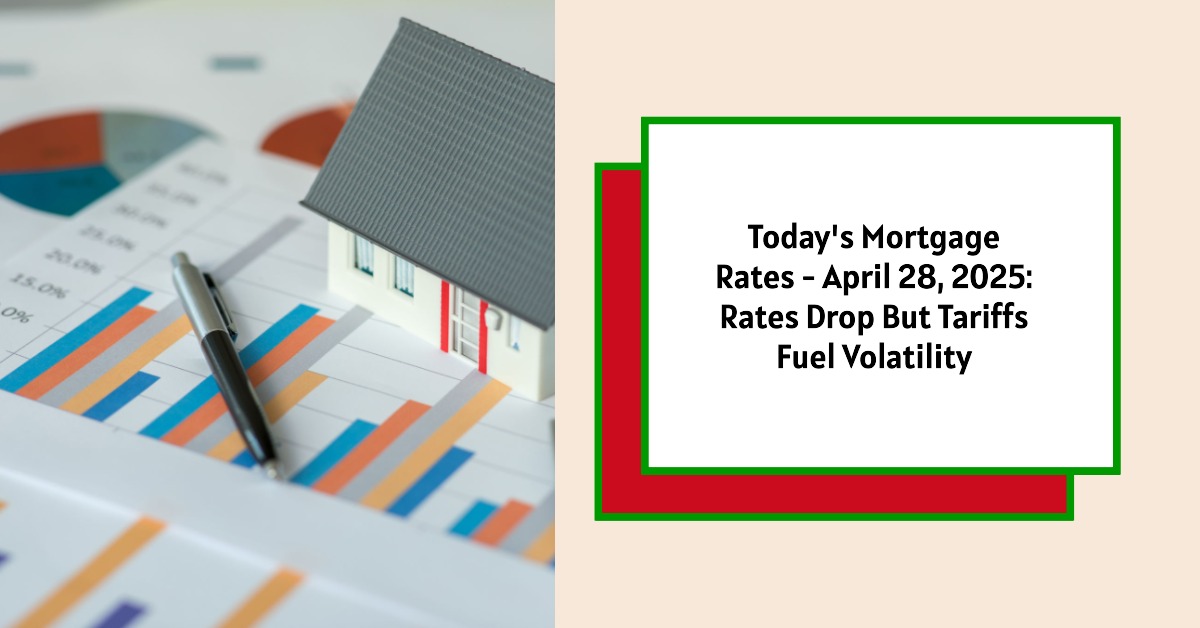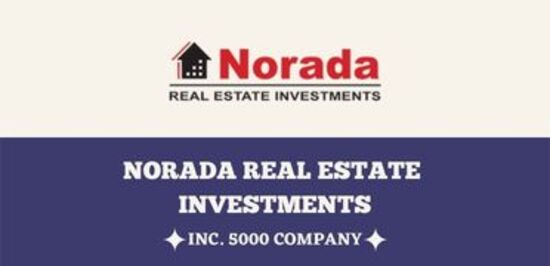As of April 28, 2025, mortgage rates have decreased overall, with the 30-year fixed rate averaging 6.71%. This indicates a slight decline in mortgage rates, which have been somewhat volatile in recent days. While it's encouraging to see rates drop below 7%, various economic factors, particularly inflation, could affect these rates in the near future.
Today's Mortgage Rates – April 28, 2025: Rates Drop But Tariffs Fuel Volatility
Key Takeaways
- Current mortgage rates are averaging 6.71% for a 30-year fixed mortgage.
- Volatility continues: Rates have fluctuated and can be influenced by economic factors such as inflation.
- Refinance rates tend to be slightly higher than purchase rates, with 30-year refinance rates currently at 6.72%.
- Fixed versus adjustable rates: Consider the differences in monthly payments and long-term costs.
Current Mortgage Rates Today
Mortgage rates can significantly impact home-buying decisions. Here's a detailed breakdown of the current mortgage rates according to Zillow data:
| Loan Type | Current Rate |
|---|---|
| 30-Year Fixed | 6.71% |
| 20-Year Fixed | 5.39% |
| 15-Year Fixed | 6.00% |
| 5/1 Adjustable Rate | 7.30% |
| 7/1 Adjustable Rate | 7.31% |
| 30-Year VA | 6.23% |
| 15-Year VA | 5.73% |
| 5/1 VA | 6.37% |
The 30-year fixed mortgage remains the most popular choice for homeowners. The appealing monthly payments extend over a longer term, but the total interest paid over the life of the loan can be substantial.
Current Refinance Rates Today
If you're considering refinancing, here are the current average refinance rates:
| Loan Type | Current Rate |
|---|---|
| 30-Year Fixed | 6.72% |
| 20-Year Fixed | 6.34% |
| 15-Year Fixed | 6.10% |
| 5/1 Adjustable Rate | 7.60% |
| 7/1 Adjustable Rate | 7.49% |
| 30-Year VA | 6.32% |
| 15-Year VA | 5.85% |
| 5/1 VA | 6.31% |
Refinance rates are often slightly higher than purchase mortgage rates, reflecting the different risks associated with these loans.
In-Depth Look at Mortgage Rates
Understanding the 30-Year Fixed Mortgage
As already noted, the 30-year fixed mortgage rate is currently at 6.71%. This type of mortgage spreads payments over 360 months, which makes monthly payments more manageable. For instance, if you take out a $300,000 mortgage under these terms, your monthly repayment would be approximately $1,938, and you would pay around $397,617 in interest over the life of the loan. This payment structure allows many homeowners to afford larger homes by smoothing out costs over a longer term.
The primary advantage of a 30-year mortgage is that it allows borrowers to take on a larger loan amount without stretching their monthly budget too thinly. In addition, because the term is long, it provides borrowers time to adjust their finances, plan for expenses, and build equity at a steady pace. However, the downside is that most interest is paid early in the loan term, as monthly payments are primarily directed toward interest.
Exploring the 15-Year Fixed Mortgage
On the other hand, the 15-year fixed mortgage is available at 6.00%. While the interest rate is lower, the monthly payment will be significantly higher due to the reduced time to pay off the principal. If you chose the same $300,000 mortgage, your monthly payment would increase to $2,532, meaning although you’ll pay less interest overall, the cost per month can strain your current budget. You’d only pay about $155,683 in interest over the life of the loan, which is a compelling argument for those who can afford it.
Opting for a 15-year mortgage can be beneficial for several reasons:
- Interest Savings: With significantly less interest paid over the life of the loan, homeowners can save substantial money if they stick to the loan until maturity.
- Equity Building: Homeowners build equity much faster with a 15-year mortgage, which can be an advantage if they wish to sell or refinance and take advantage of improved financial standing.
- Financial Discipline: Knowing you have a shorter duration to pay off the debt instills a level of discipline that can be beneficial for financial health.
Adjustable Rate Mortgages (ARMs)
Adjustable-rate mortgages (ARMs) offer another path for buyers, wherein the interest rate is not fixed for the life of the loan. Current average rates for ARMs are higher than those for fixed-rate mortgages, but they offer lower initial rates. For example, a 5/1 ARM has a current rate of 7.30%, while a 7/1 ARM is at 7.31%.
The key features of ARMs include:
- Initial Fixed Rate Period: ARMs typically have a fixed rate for the first few years of the mortgage (for instance, five or seven years), after which rates can fluctuate annually.
- Market Linked: After the initial fixed period, the rate adjusts based on market conditions, which could result in lower payments if rates decrease but may also lead to higher rates if the economy strengthens.
- Potential for Lower Initial Payments: This product can be a good fit for buyers who anticipate selling or refinancing before the adjustable period kicks in, allowing them to benefit from the lower rates without bearing the risks of interest increases.
Factors Influencing Mortgage Rates
Several interconnected economic factors can influence mortgage rates significantly:
- Inflation: If inflation expectations rise, it often leads to increased interest rates. Currently, concerns about inflation and tariffs may raise rates again in the near future.
- Federal Reserve Policies: The Fed's decisions on interest rates have a direct correlation with mortgage rates. Market speculations regarding policy changes can lead to volatility in mortgage pricing.
- Economic Growth Rates: If the economy continues to grow without significant slowdown, we might see rates stabilize or increase.
- Geopolitical Factors: Political issues, trade wars, and international relations can also sway market confidence and, in turn, affect mortgage rates.
Historically, mortgage rates are intricately linked to inflation, employment reports, Federal Reserve decisions, and a host of other economic indicators. Keeping an eye on these factors provides prospective homeowners with better insight into the timing of their buying decisions.
Read More:
Mortgage Rates Trends as of April 27, 2025
Mortgage Rates Drop for the Second Day in a Row
When Will the Soaring Mortgage Rates Finally Go Down in 2025?
Why Are Mortgage Rates Rising Back to 7%: The Key Drivers
An Analysis of Recent Trends
In the past few days, there has been a noticeable decline in mortgage rates. This change came after fluctuations caused by market fears related to political events surrounding the Federal Reserve. With reports that President Trump has no intention of firing Federal Reserve Chair Jerome Powell, which alleviated some market fears, we witnessed a slight retreat in mortgage rates.
However, with ongoing concerns about inflation stemming from tariffs, the potential for increased rates looms. As observed, rates could rise rapidly if inflation becomes a dominant issue, leading to another spike similar to what we saw recently.
A glance at historical trends reveals that rates fluctuated widely during economic uncertainty. Though the current decline seems promising, such shifts are often temporary, contingent upon the economic environment’s dynamics. If inflation trends continue upward or rises above acceptable limits, we could see a quick return to higher mortgage rates.
What Homebuyers Need to Consider
For potential homebuyers, locking in current rates may be a practical consideration, especially when working with lenders who offer a float-down option. This allows buyers to secure a present rate, but if rates decrease before the closing, borrowers can benefit from the lower rates.
It's also essential to assess whether to pursue a fixed or adjustable-rate mortgage based on personal financial situations. Buyers must weigh the risk associated with interest fluctuations against the benefits of lower initial payments offered by ARMs.
Looking Ahead: Will Mortgage Rates Drop in May 2025?
As we approach May, speculation regarding the direction of mortgage rates continues. Predictions suggest that rates could see minor declines throughout 2025 if a recession appears on the horizon, which often results in lower borrowing costs. Continuous monitoring of economic indicators and employment statistics will provide essential insights into potential rate shifts.
Experts anticipate that rates are unlikely to return to the historic lows of 2020 and 2021, when 30-year fixed rates fell below 3%. However, as borrowers weigh options, the current trend suggests the possibility for a softening of rates, potentially settling closer to the 6% range in upcoming years as the economy stabilizes.
Conclusion
In summary, mortgage and refinance rates remain crucial considerations for anyone looking to buy a home or refinance an existing mortgage. While the current trend shows rates falling below 7%, economic conditions suggest continued volatility. Mortgage rates typically fluctuate based on inflation and Federal Reserve policies, which underscores the importance of keeping informed about the economy.
For a summary of today's mortgage rates:
- 30-Year Fixed: 6.71%
- 15-Year Fixed: 6.00%
- 30-Year Refinance: 6.72%
- 15-Year Refinance: 6.10%
Understanding these numbers, how they impact financial decisions, and remaining proactive can position buyers for better financial opportunities in a changing market. If you're considering a home purchase or refinance, these rates may provide a good chance to secure advantageous financing options in this fluctuating market scenario.
Turnkey Real Estate Investment With Norada
Investing in real estate can help you secure consistent returns with fluctuating mortgage rates.
Despite softer demand, smart investors are locking in properties now while competition is lower and rental returns remain strong.
HOT NEW LISTINGS JUST ADDED!
Speak with an investment counselor (No Obligation):
(800) 611-3060
Also Read:
- Will Mortgage Rates Go Down in 2025: Morgan Stanley's Forecast
- Expect High Mortgage Rates Until 2026: Fannie Mae's 2-Year Forecast
- Mortgage Rate Predictions 2025 from 4 Leading Housing Experts
- Mortgage Rates Forecast for the Next 3 Years: 2025 to 2027
- 30-Year Mortgage Rate Forecast for the Next 5 Years
- 15-Year Mortgage Rate Forecast for the Next 5 Years
- Why Are Mortgage Rates Going Up in 2025: Will Rates Drop?
- Why Are Mortgage Rates So High and Predictions for 2025
- Will Mortgage Rates Ever Be 3% Again in the Future?
- Mortgage Rates Predictions for Next 2 Years
- Mortgage Rate Predictions for Next 5 Years
- Mortgage Rate Predictions: Why 2% and 3% Rates are Out of Reach
- How Lower Mortgage Rates Can Save You Thousands?
- How to Get a Low Mortgage Interest Rate?
- Will Mortgage Rates Ever Be 4% Again?


